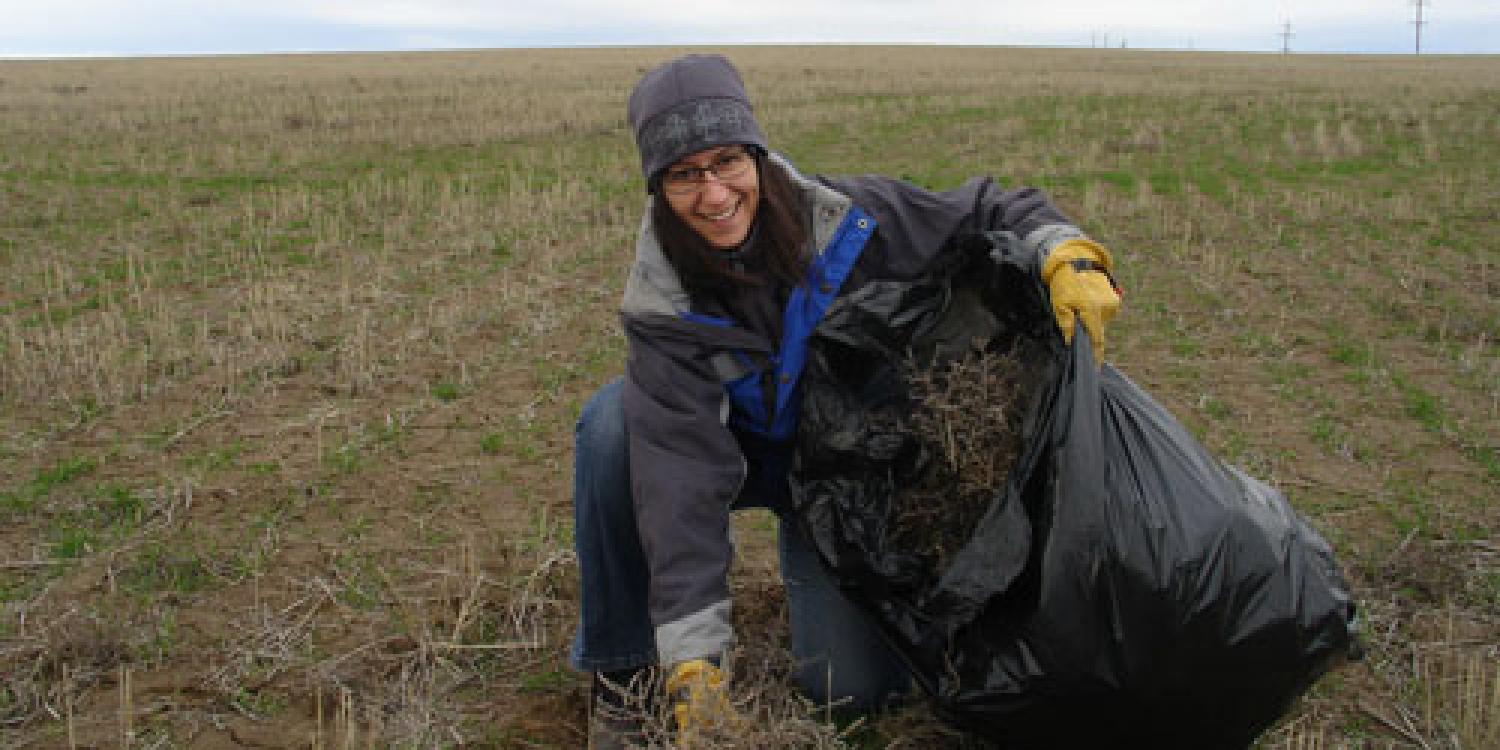
Eastern Oregon wheat farmers face a daunting situation – persistent weeds becoming resistant to the commonly used herbicide called glyphosate. In the Pacific Northwest, Russian thistle infests nearly 5 million acres and costs farmers more than $50 million annually in control measures. Where severe infestations occur, Russian thistle reduces wheat yield up to 50%, diminishes harvest efficiency and can prevent wheat harvest entirely. Farmers have used glyphosate, sold commonly as Roundup, for decades to effectively control weeds, including Russian thistle, the most frequent tumbleweed in the Pacific Northwest. There’s evidence that downy brome is also becoming resistant.
In response, Oregon State University weed scientists Judit Barroso and Larry Lutcher began researching possible alternatives to glyphosate to help growers avoid the increasing problem of resistance and successfully thwart Russian thistle and other weeds. Barroso studied the effects of residual herbicides that provide extended control in no-till fallow fields in collaboration with Lutcher, OSU Extension faculty in Morrow County, and Drew Lyon, a scientist from Washington State University.
No-till fallow refers to the system of planting a crop one year and leaving the land to rest, or lie fallow, the next. Most farmers don’t till in fallow years and allow the residue from the previous year to remain on the soil to prevent wind-induced erosion and water loss. Russian thistle thrives in fields of no-till fallow. This species of tumbleweed develops an extensive root system and prolific above-ground material. The lower stem of tumbleweed breaks off at ground level after the first hard frost in October or November. Seeds fall from the dead plants as they roll across fields during the wind storms common to the area. Left uncontrolled, the weed removes valuable moisture from deep within the soil, which leads to a reduction in yield of four bushels of wheat per acre and results in lost income.
Lutcher designed and implemented four large-scale field demonstrations to test the efficacy of the herbicide sulfentrazone as an alternative to glyphosate. The research team found that the most effective Russian thistle control with residual herbicides was obtained with Spartan Charge (sulfentrazone and carfentrazone) and Fierce (flumioxazin and pyroxasulfone) applied in spring, although in some years and locations, a similar control was found by applying those herbicides in the fall as well. With alternative post-emergence herbicides, Barroso found that the tank mixes between glyphosate plus Reviton (tiafenacil), and Reviton plus Vida (pyraflufen) produced similar control in Russian thistle as glyphosate applied alone.
As a result, outreach to regional wheat farmers led to expansion of this method of weed control by 30,000 acres in 2021. The prevented yield loss of four bushels per acre has an estimated value, assuming a conservative wheat price of $8.50 per acre, of about $1 million.
Further, traditionally, growers in eastern Oregon relied on tillage to control weeds. And although tillage can control weeds successfully, it breaks up the soil structure, contributes to erosion and prevents water infiltration, Barroso said. No-till farming has been proven to do a better job infiltrating water in the soil, reducing soil erosion and maintaining soil structure. However, no-till farming relies only on herbicides to control weeds and is producing weeds becoming resistant to commonly used products like glyphosate. Those conditions have caused many growers to consider returning to tilling, Barroso said. Long-term sustainability of dryland fallow-based wheat production systems depends on the development of weed management plans that are less reliant on repeated application of glyphosate.